The handheld phantasmagoria of The Last of England
Gus Van Sant, director of My Own Private Idaho, Good Will Hunting, To Die For, Milk
Derek Jarman’s The Last of England is an amazing barrage of memories, obsessions, cataclysmic visions, where Derek plays a gay memoirist writing his thoughts down. A skinhead boy shoots up; light flares; dances and stomps. A Caravaggio, and beautiful Tilda Swinton valiantly defaces her ballgown and the visuals of an England going past us in burning rubble and bright home movies. An amazing soundtrack by the genius Simon Turner.
Rock’n’roll blares, as England falls, a fairy dances, beautiful soldiers drink vodka and have gay sex. Made with mostly small handheld cameras, I saw this right before I made my film Drugstore Cowboy and realised that I had needed to see Derek’s great film a little earlier than I had, because within this film there were all the potential stylistic inspirations I needed to film Drugstore which I had resigned to shoot with clunky Panavision. Oh, well. Derek was in an amazing period of film-making where he would shoot in 8mm film, transfer to video to edit and to finish on 35mm. My favourite period of his.
The kiss against the tree in Beautiful Thing
Andrew Haigh, director of Weekend, 45 Years, Lean on Pete
Beautiful Thing may not be the most radical film in queer cinema, but its release in 1996 helped nudge my 23-year-old self out of the closet.
Halfway through the film, on a hot summer night, the two teenage boys sneak off to a gay pub for the first time in their lives. Afterwards, as Mama Cass sings Make Your Own Kind of Music, they chase each other through the woods and make out against a tree.
It is a glorious moment that encapsulates that giddy rush of first love, silly and important all at the same time. And it was between two boys. It looks pretty innocent now, but it felt quietly revolutionary back then.
There’s such joy and hope in this scene, an antidote to the pain and shame that was a reality for many LGBT kids coming of age in the 80s and 90s. Our school crushes could rarely be acknowledged, let alone acted on. I never got to snog the boy I longed for across the classroom.
But here it was, up on the screen, happening for Jamie and Ste, and the audience was cheering them along. I may not have got my teenage kiss against the tree, but luckily, whenever I hear Mama Cass, it feels as if I did.
Baring breasts in My Beautiful Laundrette
Pratibha Parmar, director of Nina’s Heavenly Delights, Alice Walker: Beauty in Truth and Khush
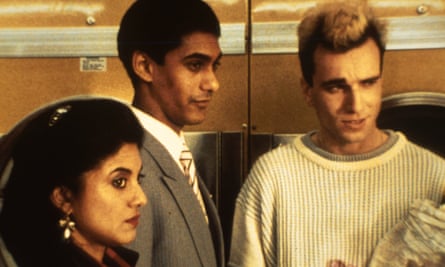
My Beautiful Laundrette came at me like a tsunami. Written by Hanif Kureishi and directed by Stephen Frears, it revealed a complex picture of Thatcher’s Britain. At its heart, an unlikely love story between Daniel Day-Lewis’s skinhead, Johnny, and Gordon Warnecke’s Omar, a dutiful Pakistani son.
When I hear the refrain “representation matters”, it is this culture-defining film I think of – in particular Kureishi’s ironic, playful script, smashing multiple demeaning stereotypes of British Asians. Post-colonial immigrants had never looked so gutsy, messy, funny and desirable.
Omar and Johnny’s hedonistic, forbidden soapy sex in the launderette was a slap in the face to Conservatives using the Aids epidemic to further demonise gay people. Yet the moment in the film which shifted my DNA was when Rita Wolf’s character, Tania, Omar’s wayward cousin, exposes her breasts through a large glass window into a room full of men pontificating as part of their weekly ritual.
This bold, defiant gesture of resistance to stultifying patriarchy resonated deeply for me. Here was another woman – like me – gleefully taking control of her own sexuality.
Quiet compassion in Victim
Terence Davies, director of Distant Voices, Still Lives, The Long Day Closes, The House of Mirth, A Quiet Passion
In Victim, Dirk Bogarde plays a closet homosexual barrister who risks both his career and marriage to break a blackmailing gang when his young friend kills himself rather than implicate him.
There is a small scene towards the end of the film when Bogarde calls for his clerk to join him. Bogarde shows him the photograph that has obvious implications. William (the clerk) looks at the photograph and says they must get the negative, having added, if the boy wasn’t crying there could be no basis for a criminal charge.
As William goes to leave, Bogarde says that surely he must have one question, and William says that he’s worked for Bogarde for 10 years and that he has never doubted his integrity.
It is a small scene of compassion and loyalty – a compassion that is so moving because of its very reticence. It moved me to tears then. It moves me to tears now.
The campfire confession in My Own Private Idaho
Wash Westmoreland, director of Still Alice, Collette
Logs burn, crackling. Drums beat in the distance. Mike Waters (River Phoenix) stares into the flames and pokes the fire. An owl hoots. Scott Favor (Keanu Reeves) lies on his side in torn jeans. “Getting away from everything feels good,” he says.
So starts this crucial scene, central to Gus Van Sant’s My Own Private Idaho. It’s the moment when the film pauses, reflects, becomes deeper, and infinitely queerer, exposing the characters’ vulnerabilities as one of them, a young narcoleptic hustler, reveals his true feelings for the other.
Released in 1992, this transgressive, anarchic art film had an enormous impact on fringe queer culture in the north of England. We were activists, protesting the discrimination of Section 28, fighting for the rights of people with Aids, while at the same time, wanting to resist assimilation into the heterosexual mainstream. Same-sex marriage was not even on our minds; sex work, however, had a frisson of outsider cool. Idaho was clearly the film for us.
Before its release, Gay Times ran a cover featuring an embrace between the two leads. This was not a time when many famous actors were willing to speak out for the still-forming acronym of LGBTQ. Keanu Reeves was considered the hottest actor in young Hollywood, River Phoenix, the maverick – the nonconformist loaded with talent and promise. We waited for this movie.
Apparently, it was Phoenix who wrote this scene, scribbling ideas on scraps of paper. He showed it to Van Sant who liked it enough to try it out. “I only have sex with guys for money,” says Scott, provoking the mumbled admission from Mike: “I love you and I’m not getting paid for it.” And the clincher: “I really want to kiss you, man!”
In my mind’s eye, I’d remembered this scene ending with the fulfilment of Mike’s declaration. Much like the 60s audience who swore they saw red blood running down the plughole in Alfred Hitchcock’s Psycho (and as it actually did in Van Sant’s colour remake), I’d imagined a kiss. On revisiting Idaho this week, I found the scene actually ends with an embrace. But, for the generation of young gay men watching in the early 90s, something more explosive than a kiss – or even full-on sex – had already happened. Queer desire had broken through.
Significant paperclips in Laurence Anyways
Claire Oakley, director of Make Up
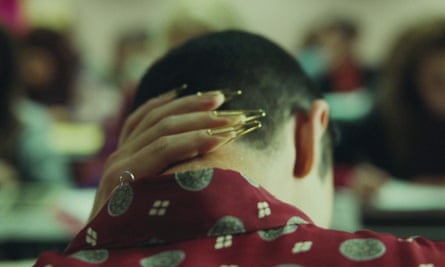
There is always a moment before it really begins. When desire bubbles out of the monotony of everyday life and pops, changing everything for ever. In Xavier Dolan’s impassioned melodrama Laurence Anyways, Laurence, a thirtysomething schoolteacher, is invigilating an exam. Bored, he starts to look at the young women taking their tests.
Two girls play with their hair and he stares at them intensely, something erotic and voyeuristic in his gaze. Another girl lifts her head and stares straight back at him, confronting him, and Laurence looks down, ashamed. We hear his breathing. And then, as we cut to the back of his head and he touches his own short hair, we see that on each of his fingertips is a paperclip – the aspiring skeleton of a long-fingernailed, feminine hand.
The moment marks the manifestation of his desire and the beginning of his odyssey. Later in the film he can voice it – “I want to be a woman” – but it is this private, primary moment that perfectly incapsulates how mighty, how undeniable and how real desires are, and how such a seemingly small moment can contain within it the power to change everything.
Black queer love denied in The Color Purple
Jasika Nicole, star of Suicide Kale, Fringe and The Good Doctor
In The Color Purple, Shug (Margaret Avery) leans over and kisses Celie (Whoopi Goldberg), real soft and real sweet. When you’re six, you wonder if maybe it was an accident. Surely no one was supposed to think that a kiss between two women was real?
More proof can be found in the fact the movie doesn’t really acknowledge the moment again. But I knew, quietly, that it was the most real kiss in the whole film. It would be many years before I learned that this ambiguity was purposeful on the part of the film-makers; that the book painted an entirely different picture of that kiss, of those women, of their love. And you will feel cheated.
When I think back on myself as a little girl, I am heartbroken at how little opportunity I had to envision future versions of myself, as many as my mind could conjure, without attaching shame or guilt or fear to any of them. For this scene to offer me such a precious glimpse of what my world might look like, only to have it morph into a watery adaptation of the beautiful black, queer love it was meant to represent, feels almost cruel.
But despite this, the moment has somehow managed to have a positive impact on me; it has made me live, work and create unequivocally, with deliberateness, and with pride. And it has allowed to me to become the future version of myself that I never got to see as a kid: a black queer woman who knows that her love is real.
Playing a tape recorder to the ocean in Happy Together
John Cameron Mitchell, director of Hedwig and the Angry Inch and Shortbus
My favourite queer films have been made by straight folks (Toni Morrison demanded her students write about what they don’t know, thus giving birth to empathy): Moonlight, L.I.E, Dog Day Afternoon and my favourite, Happy Together (1997) by Wong Kar-Wai, starring Tony Leung and a queer Leslie Cheung playing tortured Hong Kong lovers stranded in Buenos Aires. They break/make up in a mad and sometimes literal tango of passionate ambivalence. Tony ends up working in a restaurant and a sweet co-worker, Chang, winkingly confides he likes women “with low voices”. Tony is too heartbroken to open up to a clearly more promising lover. Chang decides to travel to Tierra del Fuego – “the end of the world” – where it’s said if you tell the ocean your troubles, it will wash them away.
In my favourite scene, Chang asks Tony to go with him, but when he demurs, Chang hands him a tape recorder so he can record something that Chang can play to the ocean. Tony retreats to a corner and wonders what he should say. All that has befallen him and his own self-hatred render him speechless. It’s a shockingly poetic moment: the world seems to have conspired to deny a queer person love or even a voice. Later Chang plays the tape and is puzzled – all he can hear are sobs. But the spell works because when all our characters have lost touch, Tony chances on Chang’s parents’ food stall in Taipei and steals a photo of Chang. He now knows where to find him. It’s a heartbreakingly hopeful ending. Sadly, Leslie Cheung took his own life in 2003 after homophobic bullying in the press. In 2018, an asteroid was named in memory of a star: 55383 Cheung-Wokwing.
Hanging out the laundry in Fire
Maryam Keshavarz, director of Circumstance and Viper Club
I saw Deepa Mehta’s Fire while I was a student in 1996. I trekked to downtown Chicago on a freezing evening with a motley crew of classmates. We fashioned ourselves budding feminists, artists and intellectuals. Rowdy and rambunctious at the start of the screening, we were left in silent awe by the end.
Radha (Shabana Azmi) and Sita (Nandita Das) are sisters-in-law, both living in loveless marriages in an unremarkable middle-class family in India. In one scene they hang out vibrant orange sheets to dry on the room of the home they share. And, for a moment, they are suspended in time. They exist only in the eyes of the other – and for a moment there is a radical idea that they can be whole without the outside world. And there is the smallest and most electrifying moment when Radha touches Sita’s face.
As the viewer, you have the feeling the whole house could be burnt down. This one gesture holds so much desire, so much feeling. It’s that ephemeral moment that novels are written about and people spend a lifetime searching for and never find. And it poses the question: can love live outside the expectations and demands of society?
Struggling to stay upright in A Fantastic Woman
Ugla Stefanía Kristjönudóttir Jónsdóttir, author and co-director of My Genderation
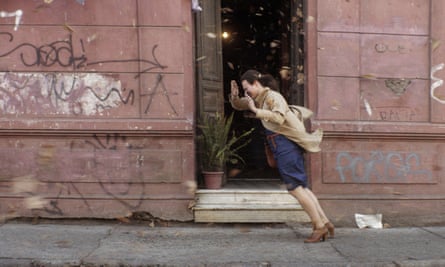
There’s nothing quite like seeing authentic representation on screen. You don’t know it until it hits you, which is what happened when I first watched A Fantastic Woman. While the likes of Boys Don’t Cry, Transamerica and Priscilla, Queen of the Desert have had great moments, Daniela Vega’s performance is so captivating and raw. As a trans woman, she is really able to capture the essence of being trans.
In the film, her partner dies. His family consider her a shameful secret and ban her from the funeral. We see her walking along the street as the wind picks up. Soon it becomes so intense she is nearly swept off her feet and struggles to continue walking. This immediately connected. Trans people are up against so much in society every single day, simply for being who they are. This scene reminded me to persist, no matter what.
A kiss about which nothing is said and everything is meant in The Hours
Chloé Robichaud, director of Sarah Prefers to Run, Féminin/Féminin and Boundaries
I was 15 when I saw The Hours in my home town cinema. I even bought the soundtrack right after, just to immerse myself again in that very special scene, in which Laura Brown (Julianne Moore), kisses her neighbour, Kitty(Toni Collette).
In The Hours, we follow the journey of three women, Clarissa, Laura and Virginia, of different generations, all interconnected by Woolf’s 1925 novel, Mrs Dalloway. Laura is a suburban wife, pregnant with her second child. We can sense her feeling of entrapment. She feels the urge to escape a life in which she just doesn’t belong. When her neighbour, Kitty, shows up one afternoon, asking Laura to feed her dog while she goes to the hospital for a procedure, Laura feels scared.
She kisses her, gently. Kitty stays still, but she’s not pushing her away, either. Kitty leaves, like it never happened. Nothing is said about that kiss, but so much is underlying.
My love life at that point was lived in secret, and mostly in my imagination. For me too, everything was left unsaid. But seeing Laura choosing herself at that one point, and seeing Clarissa Vaughn living in an openly lesbian relationship made me feel hopeful. I had the hours.
A rethink of The Crying Game in Disclosure
Freddy McConnell, journalist and documentarian, and star of Seahorse
Watching the documentary Disclosure with my parents and 23-year-old brother was a profound experience. On one hand it was profoundly awkward, watching trans caricatures being portrayed in every conceivable toxic and monstrous way. But more than that, I could sense my family experiencing profound moments of realisation and empathy in ways they never had before.
I’m a transgender man and my mum, stepdad and brother have always stood by me. I’ve never had reason to doubt this and that’s a rare gift. Yet, as amazing as their protectiveness and love is, it’s not the same as an objective, intellectual understanding of what trans people have endured thanks to our portrayal in popular culture, nor the extent to which it hinders our acceptance and safety in society even today.
One of the films examined in Disclosure is The Crying Game. It doesn’t mean much to me; I was five when it came out. But my parents saw it and until they rewatched it through the lens of this documentary, they had never had cause to consider how dehumanising and damaging the “reveal” scene is, where, upon learning his lover is trans, Stephen Rea’s character runs to the bathroom to vomit at length.
When we talked about it, my parents seemed genuinely rattled, as if realising a fundamental truth about social oppression for the first time and acknowledging some unwitting complicity. I was grateful for their honesty and willingness to let this extremely uncomfortable lesson fully land.
To me, Britain especially has a lot to unpack in terms of our historical portrayal of gender variance, or “deviance”, both on screen and on the page. To a large extent, trans acceptance is not a legal or political conundrum but a cultural and emotional process. One’s middle-aged parents having the chance to reinterpret The Crying Game from a trans perspective is a powerful step in that. If every cis person would do this, perhaps we could finally end the “trans debate”, which similarly tends to treat us as metaphors and deceptions, rather than as real people.
An easeful transition in Orlando
So Mayer, author of A Nazi Word for a Nazi Thing (2020) and a forthcoming BFI Film Classic on Orlando (2022)
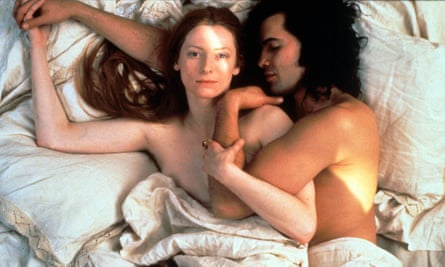
I was 15, midway through year 10 and five years into Section 28. In English, we’d studied William Shakespeare, Wilfred Owen, Carson McCullers, Maya Angelou, Virginia Woolf, but no teacher had ever even whispered about what united these writers: that they were queer.
So there was no way to be prepared for the scene in Sally Potter’s gorgeously subversive and subversively gorgeous adaptation of Woolf’s novel where Orlando awakes, sheds a long, curly wig and white shirt, washes, then turns to the mirror, and says: “Same person. No difference at all. Just a different sex.”
Just like that.
In the novel there are trumpets. On the soundtrack, there are voices (including Potter’s voice), breathy, sounding a single note. Transition as it should be: easeful, celebrated, vivid – and centred. The heart of the story. This moment matters because it’s about matter: look how the air and light and water love Orlando, a fanfare for the luminous moment of being consonant in her body. How the world is dazzled by her and dazzles with her. Breathing with her.
Around her, the air is full of shimmering dust, silver particles that mark her and our particularity and beautiful imperfection. Dust is skin: the past we shed, still present. It’s also ash from the fires of war, a reminder that Orlando has refused to participate in violence immediately before this change. In taking off her wig and shirt, she makes visible the trappings of aristocracy. In the mirror, she sees her whiteness.
She has a long way to travel – by camel, foot, motorbike – to the film’s end, where she will lock eyes with an angel who sings of being “neither a woman nor a man”. Holding this transformation scene at the centre, not the climax, gave me permission to take time, keep changing.
Sudden anger in The Secret Policeman’s Ball
Ryan Gilbey, film critic, the New Statesman
The Secret Policeman’s Ball – a rough-hewn film of Amnesty International’s late-70s comedy-and-music fundraising concert – is a blast. Unless, that is, you’re a 13-year-old boy, secretly attracted to other boys, and you’re watching it at home in 1984 with your parents, not expecting to be confronted by a man in a donkey jacket, armed with a guitar and a sneer, singing about how glad he is to be gay. Tom Robinson was the first person I’d ever seen express anger at the bigotry of the straight, homophobic world. Weren’t you just meant to lump it?
His anthem Glad to Be Gay is drenched in slow-dawning sarcasm. Listen to the deceptively soothing way he delivers the opening lines: “British police are the best in the world / I don’t believe one of these stories I’ve heard / ’Bout them raiding gay bars for no reason at all / Lining the customers up by the wall …” Then he halts the song. “You don’t have to be gay to sing on this chorus,” he tells the audience. “But it helps.” I was aghast – why did he have to say these embarrassing things in front of my mum and dad? – but I also didn’t want it to stop.
The chorus is full of upbeat words (“sing”, “glad”, “happy”), but Robinson spits them out as though they’re the bones of his enemies. The camera choices only consolidate the song’s power. Most of his performance is shot in tight closeup, so there’s no escape, no possible release of tension. He’s in your face in both senses.
Unquestioned gender acceptance in Tomboy
Caspar Salmon, film writer
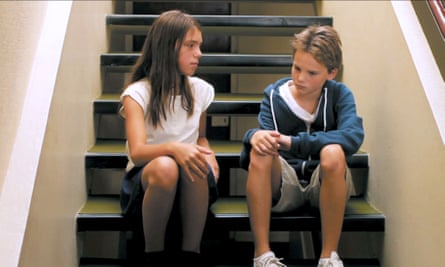
At the beginning of Tomboy, Céline Sciamma’s exquisitely turned little film from 2011, the main character, Laure, has just moved to a new area with her parents and younger sister. One day, outside her block of flats, a girl from the neighbourhood, Lisa, asks her: “T’es nouveau?” Lisa naturally genders the boyish Laure as male, and in that instant a flicker of possibility is born, whereupon Laure seizes her chance and rebrands as Mickaël, a young boy.
Two things are happening in this moment, showing Sciamma’s great intelligence and sensitivity, as well as her queer eye. First, she shows how her protagonist’s gender presentation, and possibly her barely registered sexuality, are a product of external forces almost as much as they stem from an internal drive. Gender is in the eye of a beholder, here; it is a socially constructed thing, relying on a series of codes, such as costume and mannerism. Being what you want to be, accepting who you are, can stem from that recognition and acceptance in others.
The other crucial thing is that Sciamma is situating her narrative in the world of children: Lisa is completely innocent in extending a warm welcome to the neighbourhood to this nice new boy, and by the same token, all the children in the film are wholly innocent, too. They understand gender, of course, as they were raised to perform it and detect it in others, but there is a total naivety at play, too.
Laure’s little sister accepts her new gender/persona: nothing is hard to understand here. Whatever tension exists in the film between the children hinges on the idea of betrayal rather than anger at something unnatural. Sciamma shows that queer difference is not rooted in sex, but is a lived expression of one’s inner self. And all from that one spark: “T’es nouveau?”
BFI Flare, the London LGBTIQ+ film festival runs online until 28 March.
This article was amended on 17 March 2021. The original stated that Rita Wolf’s character, Tania, in My Beautiful Laundrette, was Omar’s sister. In fact she was his cousin. This has been corrected.
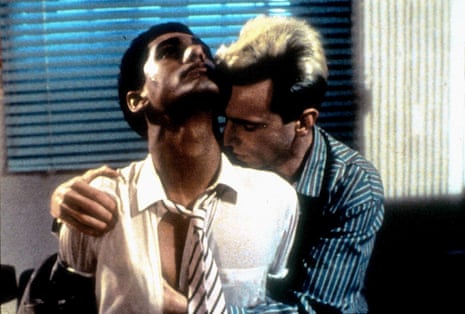
Comments (…)
Sign in or create your Guardian account to join the discussion